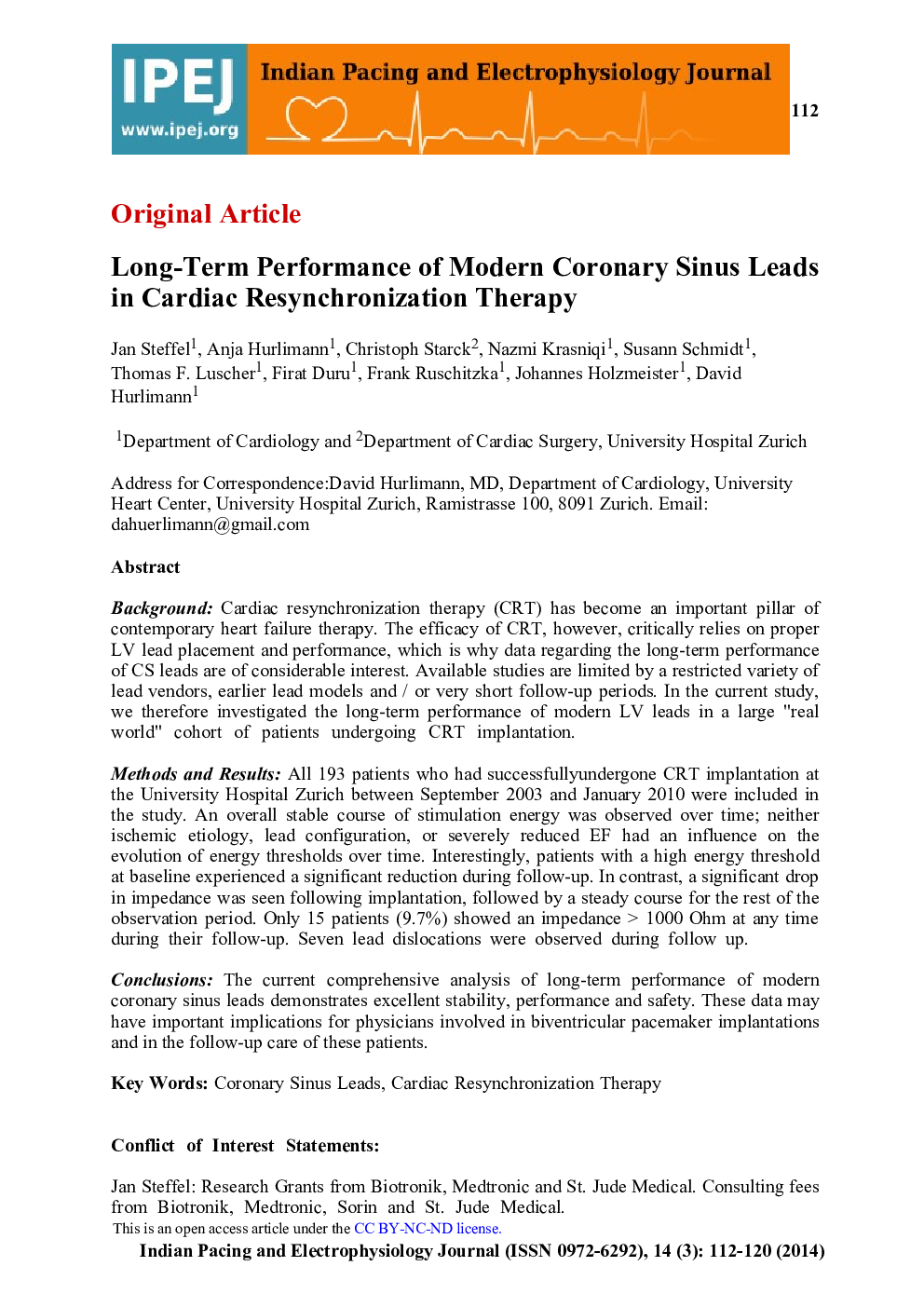| Article ID | Journal | Published Year | Pages | File Type |
|---|---|---|---|---|
| 2928473 | Indian Pacing and Electrophysiology Journal | 2014 | 9 Pages |
BackgroundCardiac resynchronization therapy (CRT) has become an important pillar of contemporary heart failure therapy. The efficacy of CRT, however, critically relies on proper LV lead placement and performance, which is why data regarding the long-term performance of CS leads are of considerable interest. Available studies are limited by a restricted variety of lead vendors, earlier lead models and / or very short follow-up periods. In the current study, we therefore investigated the long-term performance of modern LV leads in a large “real world” cohort of patients undergoing CRT implantation.Methods and ResultsAll 193 patients who had successfullyundergone CRT implantation at the University Hospital Zurich between September 2003 and January 2010 were included in the study. An overall stable course of stimulation energy was observed over time; neither ischemic etiology, lead configuration, or severely reduced EF had an influence on the evolution of energy thresholds over time. Interestingly, patients with a high energy threshold at baseline experienced a significant reduction during follow-up. In contrast, a significant drop in impedance was seen following implantation, followed by a steady course for the rest of the observation period. Only 15 patients (9.7%) showed an impedance > 1000 Ohm at any time during their follow-up. Seven lead dislocations were observed during follow up.ConclusionsThe current comprehensive analysis of long-term performance of modern coronary sinus leads demonstrates excellent stability, performance and safety. These data may have important implications for physicians involved in biventricular pacemaker implantations and in the follow-up care of these patients.
